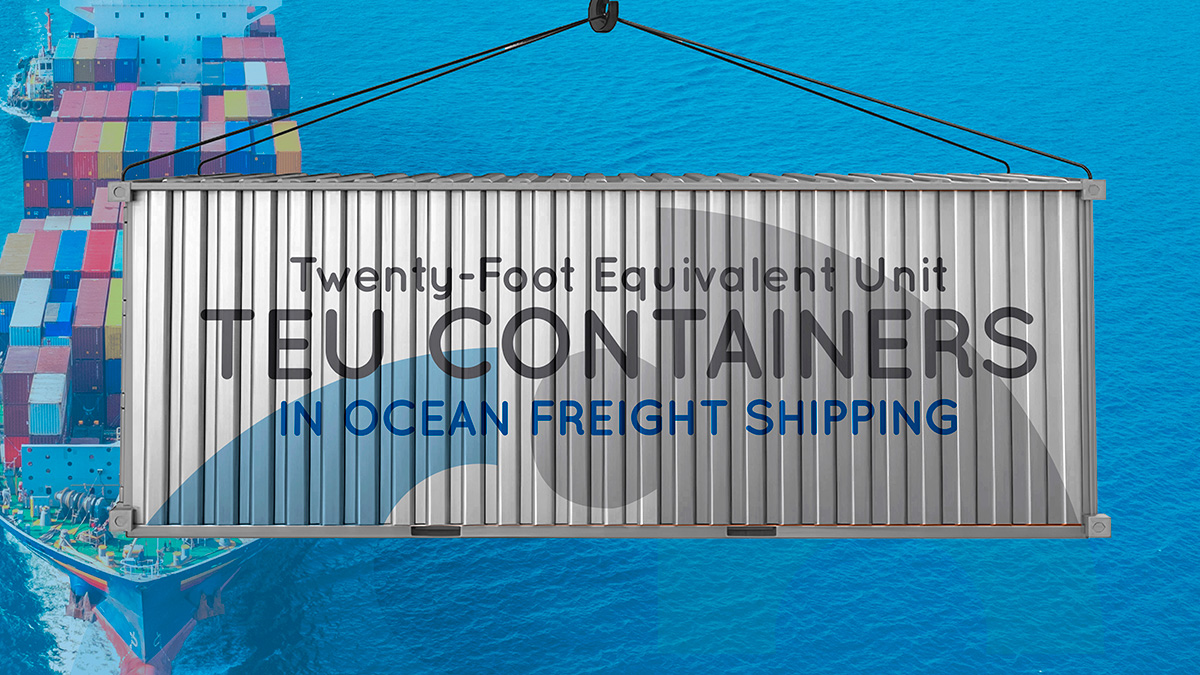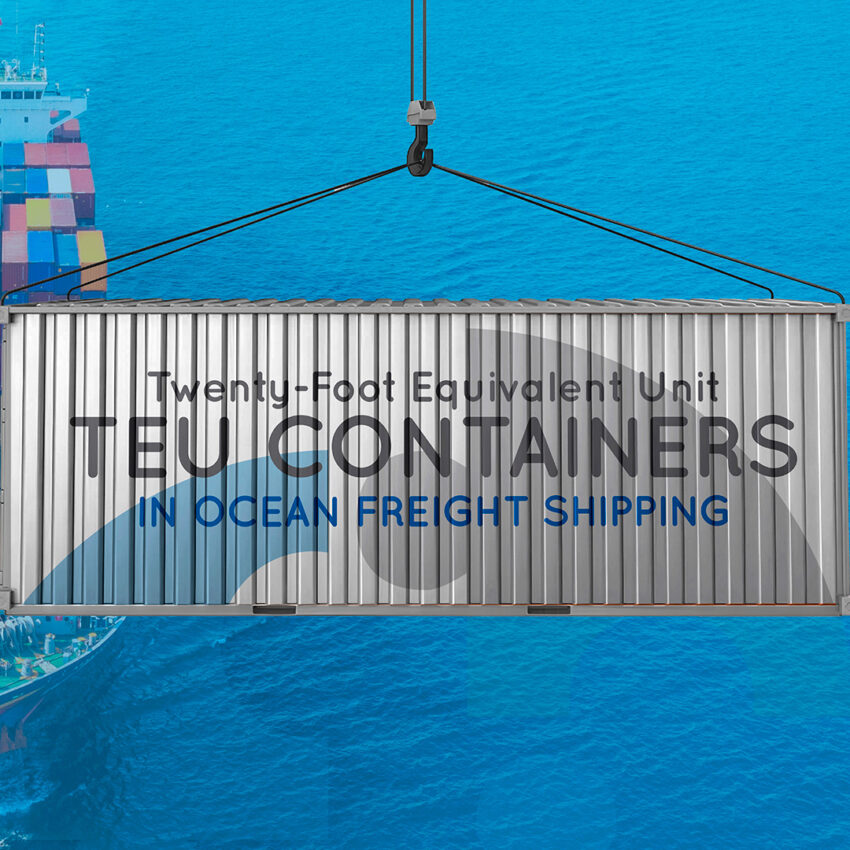The container shipping industry is a cornerstone of global trade, and at the heart of this industry lies the TEU container. Standardization, efficiency, and scalability are just a few reasons why TEU containers have become indispensable in the world of shipping. In this blog, we will explore what TEU containers are, their significance, and their impact on the container shipping industry.

What is a TEU Container?
TEU stands for Twenty-foot Equivalent Unit. It is a standardized measurement used to describe the capacity of container ships and terminals, as well as to measure the volume of containerized cargo. A single TEU container measures 20 feet in length, 8 feet in width, and 8.5 feet in height. The concept of TEU was introduced in the 1950s and has since revolutionized the shipping industry by providing a uniform standard for cargo containers.
Major industry players operate vessels with capacities exceeding 14,500 TEUs, while smaller feeder vessels typically hold 1,000 TEUs or fewer. One of the most common kind of container ships is the Post-Panamax, which has a TEU capacity ranging from 5,000 to 10,000. Another significant vessel type is the Neo-Panamax, which can hold up to 14,500 TEUs. The Ultra Large Container Vessels (ULCVs), which can be as long as 984 feet (300 meters) and are the largest vessel in the container shipping industry have capacities of 14,000 TEUs or more. The MSC Irina, the largest container ship in service as of 2023, boasts a capacity of 24,346 TEUs. In addition to ULCV and Post-Panamax vessels, the industry also utilizes small feeder ships with capacities between 1,000 and 2,000 TEUs, Panamax vessels with 3,000 to 5,000 TEUs and Feedermax vessels with 2,000 to 3,000 TEUs.
The Significance of TEU Standardization
Simplifying Global Trade
The standardization of containers through the TEU measurement has significantly simplified global trade. Before the introduction of TEU containers, cargo was often transported in a variety of shapes and sizes, leading to inefficiencies in loading, unloading, and storage. With the uniform size of TEU containers, shipping companies can now efficiently pack, stack, and transport cargo, reducing handling costs and time.
Enhancing Intermodal Transport
TEU containers are designed to be easily transferred between different modes of transport, such as ships, trucks, and trains. This intermodal capability allows for seamless movement of goods from origin to destination, enhancing the overall efficiency of the supply chain. The ease of transferring TEU containers between transport modes reduces the risk of damage and loss, ensuring that goods reach their destinations in optimal condition.
Major Types of TEU Containers
Flat Rack TEU Containers
Flat rack TEU containers are designed to accommodate heavy or oversized cargo that cannot fit within standard containers. These versatile containers are perfect for transporting bulky items like construction equipment, machinery, and wind turbines. They offer logistical flexibility as they can be easily transported by road on open trucks or specialized trailers.
TEU Reefer Containers
TEU reefer containers are equipped with advanced refrigeration and insulation systems to maintain significantly lower temperatures than standard containers. Essential for transporting perishable goods like pharmaceuticals, vegetables, meat, dairy products, and flowers, these containers ensure that shipments stay within the prescribed temperature range throughout their journey.
Open Top TEU Containers
Open-top TEU containers are ideal for cargo that exceeds the height constraints of standard containers but doesn’t require the extra height of high cube containers. These containers are typically covered with a tarpaulin, allowing for easy loading and unloading of out-of-gauge (OOG) shipments from the top using cranes.
TEU IMO Containers
For transporting hazardous goods such as dangerous liquids, gases, or radioactive materials, TEU IMO containers (named after the International Maritime Organization) are crucial. These containers feature a cylindrical tank made from corrosion-resistant materials, enclosed within a sturdy steel frame, ensuring the safe transportation of hazardous cargo and minimizing environmental risks.
Innovations and Future Trends of TEU in Container Shipping Industry
Eco-friendly Containers
The shipping industry is increasingly focused on reducing its environmental impact, leading to the development of eco-friendly TEU containers. Innovations include lightweight materials, improved insulation, and solar panels, which help reduce the carbon footprint of container shipping.
Technological Advancements
Smart containers equipped with sensors and tracking devices provide real-time data on the location, condition, and security of cargo. This information can optimize supply chain operations, improve inventory management, and enhance overall shipping efficiency.
Modular and Flexible Containers
Modular and flexible TEU containers are being developed to meet diverse shipping needs. These containers can be reconfigured to accommodate different types of cargo, offering greater flexibility. For example, foldable containers can be collapsed when empty, reducing storage and transportation space requirements.


